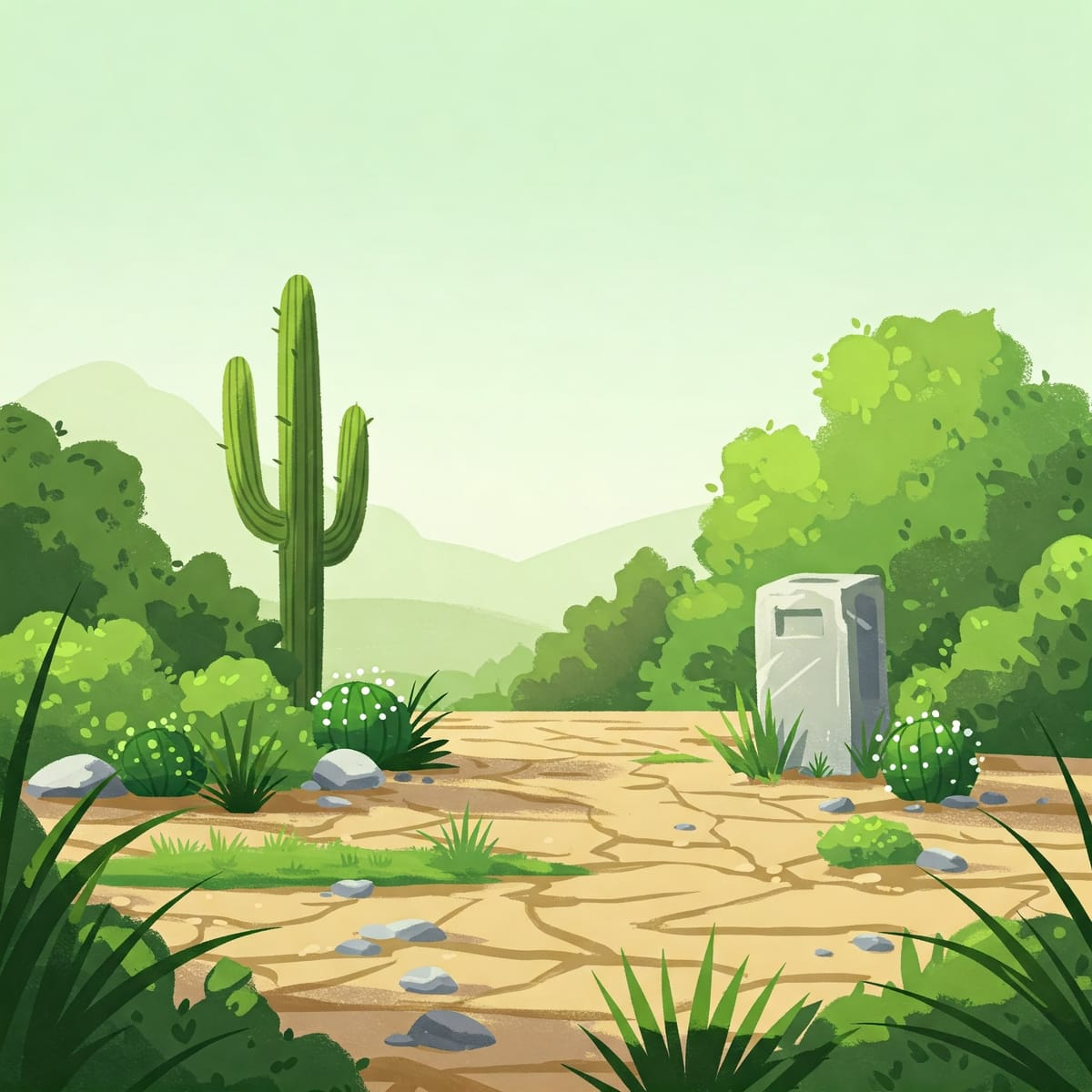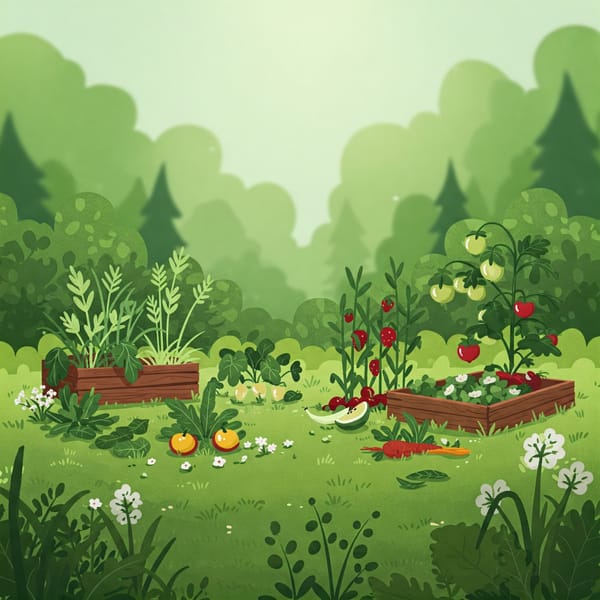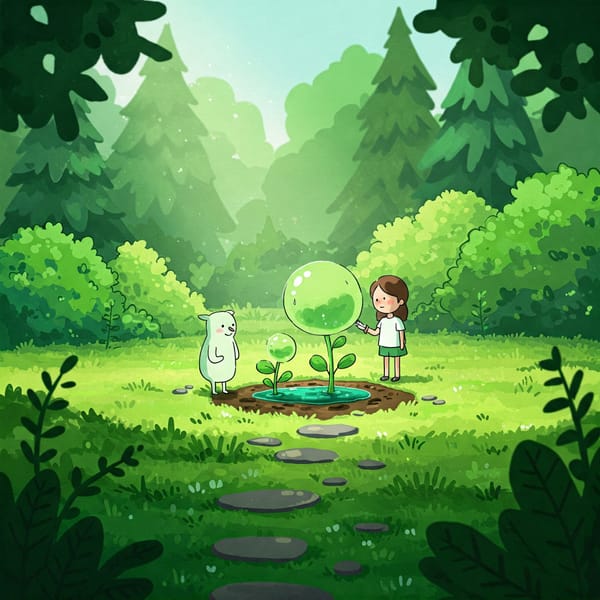Xeriscaping for Dry Climates: A Comprehensive Guide

TLDR
The increasing global water scarcity, exacerbated by climate change and unsustainable water consumption, necessitates a shift towards water-wise gardening practices. Traditional landscaping in dry climates often consumes excessive water, making it unsustainable. Xeriscaping, a landscaping method designed for arid and semi-arid regions, offers a solution by minimizing water use through techniques like using native plants, efficient irrigation, and soil management. This approach not only conserves water but also promotes environmental sustainability and reduces maintenance.
Xeriscaping for Dry Climates: A Comprehensive Guide
The escalating global water crisis, fueled by population growth, climate change, and unsustainable water usage, has made the need for efficient water management more critical than ever. Arid and semi-arid regions are particularly vulnerable, facing challenges such as prolonged droughts and extreme heat, which further strain water resources. Traditional landscaping practices, especially in these dry climates, often exacerbate the problem with their high water demands. Xeriscaping presents a sustainable alternative, offering a pathway to beautiful, functional landscapes that thrive with minimal water.
The Rising Urgency for Water-Wise Gardening
The availability of fresh water is a growing global concern, particularly in dry climates. Factors like increasing population, climate change impacts, and unsustainable water consumption patterns are placing immense pressure on water resources. The rise in prolonged droughts and extreme heat events, directly linked to climate change, intensifies the pressure on water supplies. This makes the adoption of water-wise gardening techniques a necessity for environmental stewardship and resource conservation.
Traditional landscaping practices in dry climates often consume unsustainable amounts of water. Conventional lawns and gardens, especially those with non-native, water-intensive plants like Kentucky bluegrass, require significant irrigation to maintain their appearance. In regions like the Southwest United States, outdoor water use for residential properties can account for a substantial portion of total water consumption. This unsustainable water usage highlights the urgent need for a paradigm shift in landscaping practices.
Xeriscaping, derived from the Greek word "xeros" meaning "dry," is a landscaping method designed for arid and semi-arid climates. Its primary goal is to minimize the need for supplemental irrigation by using drought-tolerant plants, efficient irrigation systems, and water-conserving techniques. Xeriscaping is not about eliminating plants altogether or creating a desert-like landscape; instead, it focuses on smart planning and design to create sustainable, aesthetically pleasing outdoor spaces that require minimal water.
Seven Principles of Xeriscaping
The principles of xeriscaping provide a comprehensive framework for designing and maintaining water-efficient landscapes. These principles, when applied effectively, can significantly reduce water consumption while creating beautiful and sustainable outdoor environments.
- Planning and Design: Careful planning and design are crucial for successful xeriscaping. This involves assessing the site's specific conditions, such as soil type, topography, and microclimates, to determine the most appropriate plants and landscaping elements. Effective design also considers the intended use of the landscape, aesthetic preferences, and water conservation goals. Creating a detailed plan helps optimize water use and ensures that the landscape is both functional and visually appealing.
- Soil Improvement: Healthy soil is essential for water conservation. Improving soil structure and composition enhances its ability to retain water and support plant growth. Techniques such as adding organic matter, like compost or mulch, can significantly improve soil quality. Proper soil preparation ensures that plants can thrive with minimal supplemental watering.
- Efficient Irrigation: Efficient irrigation systems are a cornerstone of xeriscaping. These systems deliver water directly to plant roots, reducing water loss through evaporation and runoff. Drip irrigation and soaker hoses are excellent examples of efficient methods that minimize water waste. Zoning irrigation systems based on plant water needs is also crucial for optimizing water use.
- Appropriate Plant Selection: Selecting the right plants is fundamental to xeriscaping. Drought-tolerant and native plants are ideal choices as they are adapted to the local climate and require less water. Grouping plants with similar water needs, known as hydrozoning, further enhances water efficiency. Choosing a diversity of plants also promotes ecological balance and resilience in the landscape.
- Mulch Application: Mulch plays a vital role in water conservation by reducing evaporation from the soil surface, suppressing weed growth, and regulating soil temperature. Organic mulches, such as wood chips or shredded bark, also improve soil health as they decompose. Applying mulch correctly helps retain soil moisture and minimizes the need for frequent watering.
- Lawn Alternatives: Traditional lawns are often water-intensive and require significant maintenance. Xeriscaping promotes the use of lawn alternatives, such as groundcovers, native grasses, or hardscaping elements like patios and pathways. These alternatives reduce water consumption and maintenance while adding visual interest and functionality to the landscape.
- Proper Maintenance: Even xeriscaped landscapes require some maintenance to remain healthy and attractive. However, the maintenance needs are significantly less than those of traditional landscapes. Regular tasks include weeding, pruning, and occasional watering during prolonged dry periods. Proper maintenance ensures the long-term sustainability and beauty of the xeriscape.
Plant Selection and Design Considerations
Choosing the right plants is crucial for creating a successful xeriscape. Native and drought-tolerant plants are well-suited for dry climates, as they have evolved to thrive with minimal water. These plants often have adaptations such as deep root systems, small or waxy leaves, and the ability to store water. Incorporating a variety of plant species adds visual interest and supports local ecosystems.
Effective xeriscaping design involves careful planning to maximize water efficiency and aesthetic appeal. Grouping plants with similar water needs, or hydrozoning, is essential for efficient irrigation. Designing for different microclimates within the landscape, such as sunny or shady areas, allows for a greater diversity of plant choices. Integrating hardscaping elements, such as patios, pathways, and water features, can also enhance the beauty and functionality of the xeriscape.
Water-Efficient Irrigation Techniques
Efficient irrigation systems are vital for minimizing water waste in xeriscaping. Drip irrigation is one of the most effective methods, delivering water directly to plant roots and reducing evaporation. Soaker hoses and micro-sprinklers are also excellent options for targeted watering. Zoning irrigation systems based on plant water needs ensures that each area receives the appropriate amount of water.
Proper irrigation scheduling is also crucial for water conservation. Watering deeply and less frequently encourages plants to develop deep root systems, making them more drought-resistant. Using smart irrigation controllers that adjust watering schedules based on weather conditions can further optimize water use. Regular maintenance of irrigation systems is essential to prevent leaks and ensure efficient operation.
Soil Management and Water Conservation
Healthy soil is fundamental to water conservation in xeriscaping. Improving soil structure and composition enhances its ability to retain water and support plant growth. Adding organic matter, such as compost or mulch, is a key strategy for improving soil health. Organic matter increases the soil's water-holding capacity, improves drainage, and provides essential nutrients for plants.
Mulching is another essential practice for conserving water. Mulch reduces evaporation from the soil surface, suppresses weed growth, and regulates soil temperature. Organic mulches, such as wood chips or shredded bark, also improve soil health as they decompose. Applying mulch correctly helps retain soil moisture and minimizes the need for frequent watering.
Benefits and Long-Term Sustainability
Xeriscaping offers numerous benefits, including significant water savings, reduced maintenance, and environmental sustainability. By minimizing the need for supplemental irrigation, xeriscaping helps conserve precious water resources. The use of native and drought-tolerant plants reduces the need for fertilizers and pesticides, promoting a healthier environment.
Xeriscaped landscapes are also more sustainable in the long term. They require less maintenance than traditional landscapes, reducing the time and resources needed for upkeep. The reduced water consumption translates to lower water bills, making xeriscaping an economically sound choice. Additionally, xeriscaping supports local ecosystems by providing habitat for native wildlife and promoting biodiversity.
Case Studies and Real-World Examples
Numerous case studies demonstrate the effectiveness of xeriscaping in various dry climate regions around the world. These examples showcase the diverse applications of xeriscaping, from residential gardens to large-scale public landscapes. The success stories highlight the potential for xeriscaping to transform landscapes into beautiful, water-efficient environments.
In the Southwestern United States, many cities and communities have implemented xeriscaping programs to promote water conservation. These initiatives have resulted in significant reductions in water consumption and have helped to educate residents about water-wise gardening practices. Public gardens and parks that have adopted xeriscaping principles serve as valuable examples and inspiration for homeowners.
International examples also illustrate the global relevance of xeriscaping. In arid regions of the Middle East and Australia, xeriscaping has been used to create sustainable landscapes that thrive in harsh conditions. These case studies demonstrate the adaptability and effectiveness of xeriscaping in diverse cultural and environmental contexts.
Overcoming Challenges and Misconceptions
Despite its many benefits, xeriscaping sometimes faces challenges and misconceptions. One common misconception is that xeriscaping means a landscape devoid of plants or one that looks like a desert. In reality, xeriscaping can be lush and vibrant, featuring a variety of colorful, drought-tolerant plants.
Another challenge is the initial cost of implementing a xeriscape. While there may be some upfront expenses for design, plant selection, and irrigation systems, the long-term savings in water and maintenance costs outweigh the initial investment. Education and awareness are crucial for overcoming these challenges and promoting the widespread adoption of xeriscaping.
The Future of Xeriscaping
As concerns about water scarcity and environmental sustainability continue to grow, the importance of xeriscaping will only increase. Technological advancements in irrigation systems, plant breeding, and soil science will further enhance the effectiveness and appeal of xeriscaping. Education and outreach efforts will play a vital role in promoting the adoption of water-wise landscaping practices.
The future of xeriscaping lies in its potential to create resilient, beautiful landscapes that work in harmony with the natural environment. By embracing xeriscaping principles, individuals and communities can contribute to the conservation of vital water resources, reduce their environmental footprint, and cultivate outdoor spaces that are both aesthetically pleasing and ecologically responsible. The long-term value and positive impact of xeriscaping extend beyond individual gardens, contributing to a more sustainable and resilient future for all.




